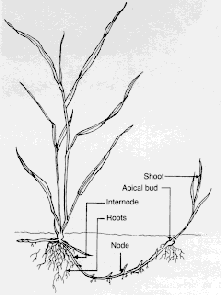| A Beautiful Day In The Neighborhood |
|---|
| Habitat The Venus Fly Trap loves the feeling of sand between its roots while it basks in the sun. So where can you find this plant catching some rays?
The coastal plains of North and South Carolina are the only areas where this picky plant likes to spend its days and nights. Not only is it specific to this area, it grows in a semi-pocosin or semi-savannah environment (shown in the photo above). Therefore, ecotone is a better term to describe its environment.
This nutrient-poor environment is uncharacteristic for most plants.
However, the Venus Fly Trap has the unique ability to capture insects in
order to receive additional amounts of nutrients (especially nitrogen) needed for its
survival. (For more information, check out the Adapt to
Trap and What's for Dinner?
pages). Therefore, the Venus Fly Trap thrives in this environment
while non-carnivorous plants grow and reproduce slowly. This
benefits the Venus Fly Trap because it eliminates competition for the
few nutrients in the soil. |
|
Anchors Away! The soil is a very important aspect of the habitat. The natural soil has a thin peaty surface layer. In addition, the entire soil is roughly 8% organic matter and 95% sand. The soil has a low fertility and a very acidic pH between 3 and 5. The Venus Fly Trap is also a self-proclaimed pyromaniac. Its love for fire helps it strive among the other organisms in its habitat. Fire releases nutrients in a more available form while eliminating the competing plants from the area.
|


